Seven Questions Over Breakfast
(In a Blue Room) with Jim Averbeck
 May 7th, 2008 by jules
May 7th, 2008 by jules
This is author/illustrator Jim Averbeck. He’s showing us the real life of a Regional Advisor, as he used to serve as the Regional Advisor for the Society of Children’s Book Writers and Illustrators for the San Francisco Bay Area. “What do you mean they turned the room we planned on using for critiques into an ADA bathroom!” he’s screaming here. “What do you mean the speaker’s plane is late! What do you mean they didn’t deliver the coffee? ARARR-
RRRghhh!!” (That’s his own, original ARARRRRRghhh there, verbatim. Nice argh, huh?)
Below that picture is a less-stressed-out picture of Jim (“My critique groups friends call this my ‘dappled boycake’ picture,” he told me. “Harassment! It’s tough being a man  in a woman’s world. It was taken at a writing retreat I did with them at the house in Sonoma County”). I’d say waaaay less-stressed-out, since he’s all reclining in the sun there, looking like he’s just had a very filling breakfast.
in a woman’s world. It was taken at a writing retreat I did with them at the house in Sonoma County”). I’d say waaaay less-stressed-out, since he’s all reclining in the sun there, looking like he’s just had a very filling breakfast.
Breakfast? you say? Oh yeah, Jim stopped by for breakfast here at 7-Imp for our illustrator interview series. And here’s the thing: Jim’s an illustrator but not a published one — yet. But, after reading Jim’s debut picture book, In a Blue Room (Harcourt, April 2008)—which was illustrated by Tricia Tusa and is seven kinds of fabulous (reviewed here by Yours Truly)—I visited his site, saw some of his art work, and lined him up for an interview in our illustrator series. (I even tacked on a few extra questions specifically about his career thus far). Seriously, people, have you read In a Blue Room yet? I’ve been runnin’ my mouth about how it’s one of the best picture books I’ve seen this year. Let’s take a moment here and soak in some of its picture-book-goodness:

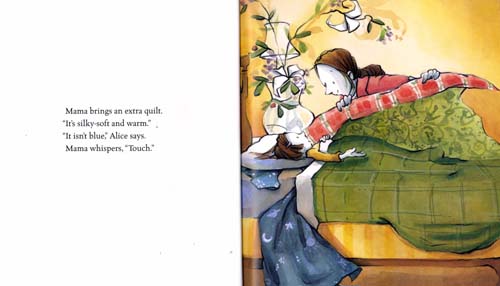
And, as I was saying, if you visit Jim’s site, you’ll see art work like this:
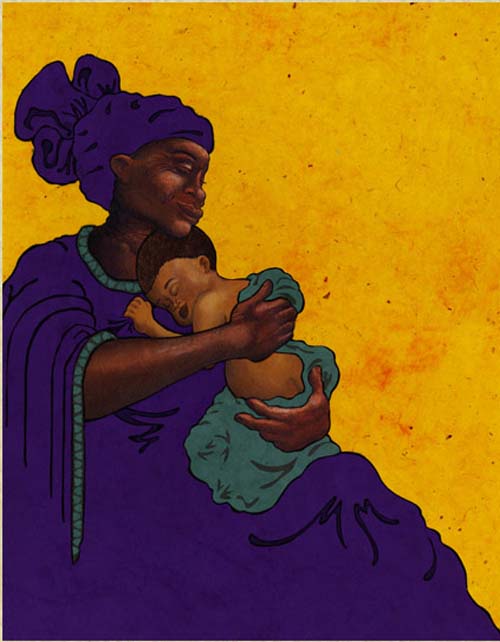
 So, yes, Jim stopped by to let me ask him about his writing, his art work, if he plans to be published as an illustrator, and—of course—what his favorite sound is and such. And what is Jim’s breakfast of choice this morning? Oatmeal with two pink lady apples cut up into it and toffee-flavored stevia. “It’s like having a caramel apple for breakfast. Yum,” he told me. “And green tea to get me moving.”
So, yes, Jim stopped by to let me ask him about his writing, his art work, if he plans to be published as an illustrator, and—of course—what his favorite sound is and such. And what is Jim’s breakfast of choice this morning? Oatmeal with two pink lady apples cut up into it and toffee-flavored stevia. “It’s like having a caramel apple for breakfast. Yum,” he told me. “And green tea to get me moving.”
Many thanks to Jim for stopping by. Let’s get the table set . . .
7-Imp: Are you an illustrator or author/illustrator?
Jim: Author/Illustrator. One odd thing about me is that I am a writer who is moving into illustration. The usual migration is the other way around.
7-Imp: Can you list your books-to-date?
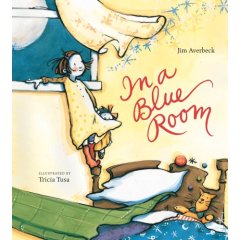 Jim: In a Blue Room (illustrated by Tricia Tusa)
Jim: In a Blue Room (illustrated by Tricia Tusa)
Little Spoon-Ears (coming from Holiday House)
7-Imp: What is your usual medium, or -– if you use a variety -– your preferred one?
Jim: I use acrylic paint and cut paper.
7-Imp: If you have illustrated for various age ranges (such as, both picture books and early reader books OR, say, picture books and chapter books), can you briefly discuss the differences, if any, in illustrating for one age group to another?
Jim: I haven’t illustrated for different age groups, but my friend Maria van Lieshout once gave a brilliant talk at a conference describing how a child’s cognitive abilities change as they age and what that means to the illustrator. Basically, older kids can deal with abstraction better than younger ones, who are more literal. There are a zillion implications that follow.
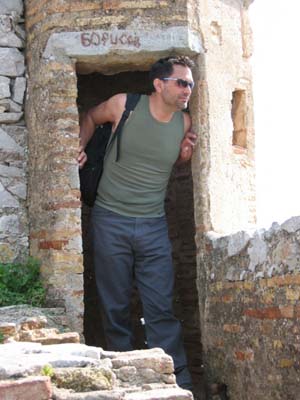 7-Imp: Where are your stompin’ grounds?
7-Imp: Where are your stompin’ grounds?
Jim (pictured here on a recent vacation in Greece): San Francisco is the southern/urban limit of my range. Western Sonoma County (in California’s wine country) is the northern/rural limit.
7-Imp: Can you briefly tell us about your road to publication?
Jim: I wish the road had been brief! Do you remember that scene in the movie Poltergeist where Jobeth Williams is reaching out for a door knob and suddenly the hallway she is in stretches out and the door recedes away from her faster than she can run? When I submitted the first manuscript I ever wrote (in 1998) for critique at the SCBWI conference in LA, I was assigned the editorial director of a major house as my critiquer. She liked the story so much she took it home with her for consideration. I thought “Hooray! I’m going to be published any second now!” Ten years later, my first book came out.
7-Imp: Can you please point us to your web site and/or blog?
Jim: www.jimaverbeck.com. I promised myself to start a blog soon, but as of now it’s still “on the list.”
7-Imp: If you do school visits, can you tell us what they’re like?
Jim: I’ve just started booking school visits as an author/illustrator. Interested parties can contact me via my website.
I have done school visits as a Returned Peace Corps Volunteer. I was in Africa. After my presentation, the Q&A generally went like this:
1st grader (raises hand): Did you see a lion?
Me: Yes, I did.
1st grader (raises hand): Did you see a giraffe?
Me: Yes, I did.
1st grader (raises hand): Did you see a tiger?
Me: No, tigers don’t live in Africa.
1st grader (raises hand): Did you see a bear?
Me: Only at the dump in Michigan.
1st grader (raises hand): Did you see a zebra?
Me: Yes, I did.
Teacher: Maybe we could ask Mr. Averbeck a different question.
Pause.
1st grader (raises hand): Did you see a lion?
7-Imp: If you teach illustration, by chance, tell us how that influences your work as an illustrator.
Jim: Teaching makes you take a good look at your own process and then find a way to convey it to those in the class. This applies to both writing and illustrating. Once you’ve looked at what you do with the analytical side of your brain, the process becomes more conscious and directed. You no longer necessarily have to flail around in the dark, though it is likely you will as your process changes and matures.
Sometimes teaching can affect your ideas more directly. I was doing an exercise with a class of women on coming up with interesting characters. The exercise consisted of identifying a character in the center of a piece of paper and then clustering adjectives to describe that character around it. When I wrote “ten-year-old boy” in the center, the adjectives I got were like this: “smelly, violent, destructive, don’t listen, dirty, etc.” Two dozen words and not one of them positive. I was appalled. Finally, one woman said, with a bit of hurt in her voice, “Hey, I have two sons. And I think they’re brave.” I vowed then and there to write a book about how great boys are. It’s tentatively titled Through the Green Wood.
7-Imp: Can you tell us about your work as the Regional Advisor for the Society of Children’s Book Writers and Illustrators for the San Francisco Bay Area? (Jim is pictured here, giving us “proof of the glamorous life of an SCBWI Regional Advisor,” he told me. “The ‘showgirl’ is actually your fellow kidlit blogger Tina Nichols Coury. This was taken at the National SCBWI conference in LA during their ‘Emerald Party.’ Guess who spent more time on their costume.”)
Jim: I was Regional Advisor for SCBWI/San Francisco for about seven years. I loved doing it and I love the organization. It is such a glamorous position. I ran a conference that has become sort of popular with the kidlit crowd. It’s called the Golden Gate Conference at Asilomar. I met all kinds of interesting writers, illustrators, editors and agents here. At one point, I took a count of how many manuscripts had sold due to connections made at the conference in the past decade. The number was somewhere north of thirty. I retired in March, because I needed to concentrate on the launch of my first book, In a Blue Room.
7-Imp: Any new titles/projects you might be working on now that you can tell us about?
Jim: An editor just told me she is getting an offer together for a picture book I wrote and illustrated called The Market Bowl. It is a trickster tale set in Cameroon, where I was in the Peace Corps. The protagonist is a little girl named Yoyo, who is based on a girl who lived up the hill from me when I was there.
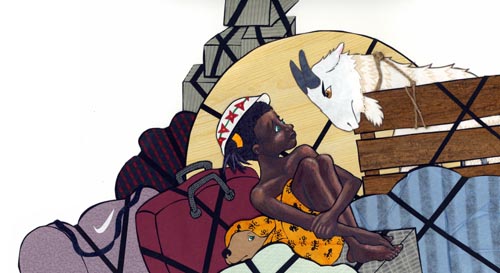
I am also working on a novel about an orphan boy living at the Fairmont Hotel in San Francisco in 1956. His aunt is kidnapped and he gets help finding her from an unusual source. There’s been some editorial interest, so I am pretty sure it will eventually make it to the bookstores.
Okay, the table’s set, and we’re ready to sit down and talk more specifics over coffee with Jim (he’s got his nice green tea, but I gotta have my coffee, folks) — and Pivot him. Of course we have to Pivot him.

1. 7-Imp: What exactly is your process when you are illustrating a book? You can start wherever you’d like when answering: getting initial ideas, starting to illustrate, or even what it’s like under deadline, etc. Do you outline a great deal of the book before you illustrate or just let your muse lead you on and see where you end up?
Jim: I have a degree in Engineering. I think that background is reflected in my process, which is one of building pieces then putting them together. When I illustrate a manuscript, the first thing I do is break it down into thirty-two pages. I figure out how I want it paced and where the page turns will go for maximum effect. I identify the major actions or emotions in the book and make sure each becomes the central aspect of its own illustration. I do very rough sketches of what I want. Then I make my friends dress up and pose for me so I will have some photo reference. I make better, tighter sketches. I create the faces and hands of the characters using acrylics. Then I use the tight sketch as a pattern for cutting out pieces of paper. I construct all these little pieces of the picture, then use the tight sketch as a guide to glue them altogether.
In fact, I write the same way. When I write a picture book, I usually work on the whole thing at once, since it is only a few hundred words. But with a novel, I keep a notebook of what I call “snippets”––little lines of dialogue or description, clever turns of phrase—whatever seems worth writing down. Then I outline the plot and character arcs. Finally, I write, filling in all the little snippets I’ve recorded. Then I revise and revise . . . and revise. But unlike many writers, my revision process tends to be one of adding more and more to flesh out what I am trying to say, rather than one of writing a lot of extra stuff—following the muse––and then editing it down. Both ways are perfectly legitimate. It is just the difference between being a sculptor who builds up the figure in clay vs. being the sculptor who reveals the figure by chipping away at a block of marble.
Did I mention procrastination as a big part of my process? I meant to say that at the beginning, but decided to put it off until now.

from rough sketch to finished piece.
2. 7-Imp: Describe your studio or usual work space for us.
Jim: I have four spaces where most of my work gets done.
There is my little closet of space in my house in San Francisco. It’s about 6’x8’. It’s mostly cabinet space for files and art supplies, a desk for the computer, and a drawing board, which slides on a bar to reveal a printer behind it.
These are shots of my studio. See — it really is a blue room, right down to the door knobs. My mother would be appalled at how messy it is. It actually isn’t finished. There will eventually be a plexiglass top about eight inches above the current work-top and an ergonomically proper chair.
I also have a house on forty acres of land in Western Sonoma County. When I write up there, I am surrounded by bunnies and bluebirds. It feels like being in a Beatrix Potter book.
I work in that top part of the house and look over all that beautiful countryside.
There is the preschool owned by my friend Lynn Hazen, where my critique group, the Revisionaries, meets. The others sit on tiny pre-schooler chairs at a table about two feet off the floor. But I always drag over the teacher’s chair, because I’m too tall for the little ones.
{Pictured here are} . . . The Revisionaries. They are, from left to right, Gianna Marino, me, Lynn Hazen, Yuyi Morales, and Maria van Lieshout. Karen Ehrhardt (who co-founded the group with Yuyi and me) was out on maternity leave that day. We have a tradition of toasting with champagne whenever one of our stories is acquired. When we started, none of us were published. Now we all are.
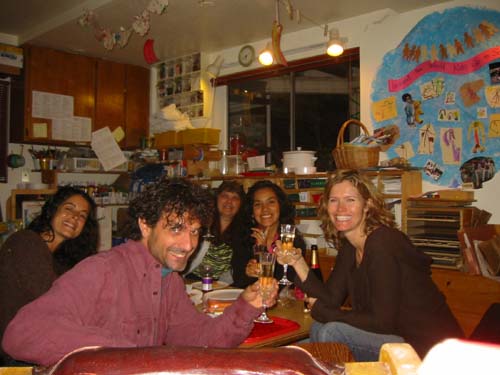
Finally, I do a lot of work at a traditional Japanese bath-house in San Francisco called Kabuki Springs and Spa. They have men’s days and women’s days. I get so relaxed there that the ideas come fast and furious. Unfortunately, the attire is, shall we say, less than is required for stowing a small notebook and pen. They do, however, provide paper cups for water and pens so you can put your name on them and re-use them. I have written most of a novel on these paper cups.
Usually I transcribe them into my computer, but here is one that was lying around.
3. 7-Imp: As book lovers, it interests us: What books or authors and/or illustrators influenced you as an early reader?
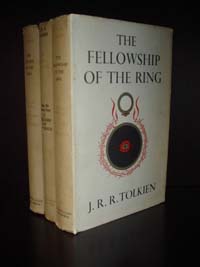 Jim: I was a strange sort of reluctant reader as a child. I read way above my grade level, so the books made for my age group bored me, but those for the level I was reading at had content to which I couldn’t really relate. So I didn’t read for fun at an early age like most writers did. I remember liking The Mysterious Bender Bones by Susan Meyers. And the D’Aulaires book on Norse mythology. Around age eleven, I had a great teacher, Mrs. Skroki, who started giving me books that I liked. The Pigman by Paul Zindel was a favorite. I liked the part where someone has graffiti’d that they are turning into a mosquito and the words get smaller and smaller. Finally, around thirteen or fourteen, I discovered Tolkien and from then on I read all the time. The Lord of the Rings, The Once and Future King, Watership Down: obviously, I had a penchant for fantasy. And I started reading comic books around that time, and still do. I preferred the straightforward stories of DC comics to the angst-ridden ones at Marvel. Eventually, though, I crossed over. Then back when Neil Gaiman starting writing for DC.
Jim: I was a strange sort of reluctant reader as a child. I read way above my grade level, so the books made for my age group bored me, but those for the level I was reading at had content to which I couldn’t really relate. So I didn’t read for fun at an early age like most writers did. I remember liking The Mysterious Bender Bones by Susan Meyers. And the D’Aulaires book on Norse mythology. Around age eleven, I had a great teacher, Mrs. Skroki, who started giving me books that I liked. The Pigman by Paul Zindel was a favorite. I liked the part where someone has graffiti’d that they are turning into a mosquito and the words get smaller and smaller. Finally, around thirteen or fourteen, I discovered Tolkien and from then on I read all the time. The Lord of the Rings, The Once and Future King, Watership Down: obviously, I had a penchant for fantasy. And I started reading comic books around that time, and still do. I preferred the straightforward stories of DC comics to the angst-ridden ones at Marvel. Eventually, though, I crossed over. Then back when Neil Gaiman starting writing for DC.
4. 7-Imp: If you could have three (living) illustrators or author/illustrators — whom you have not yet met — over for coffee or a glass of rich, red wine, whom would you choose?
Jim: Peter Sís {pictured here}, Maurice Sendak, Kadir Nelson . . . though I have briefly met Peter Sís, but just to say “thank you” after he gave a nice talk here in San Francisco.
5. 7-Imp: What is currently in rotation on your iPod or loaded in your CD player? Do you listen to music while you create books?
Jim: I have over 4,000 songs on my iPod and they span all genres. I am especially fond of Jazz, Classical, World, and weird trancy music like Dead Can Dance. I do listen to music when I write or illustrate. When I write, it has to be instrumental or music in a language that I don’t understand—like the Eastern European folk songs by Kitka. When illustrating, I can listen to anything. I like to listen to music that somehow relates to what I am working on: so, African songs by Angelique Kidjo when working on The Market Bowl, for example.
6. 7-Imp: What’s one thing that most people don’t know about you?
Jim: Nearly twenty years ago, I won the Bulwer-Lytton bad fiction-writing contest for the Children’s Division. The sentence was “The ugly duckling cried and cried and cried, but the little princess smiled, because she knew one day he would grow up to be a beautiful swan a l’orange, served up on a silver platter at the royal feast.” It’s actually hard to write a sentence that bad.
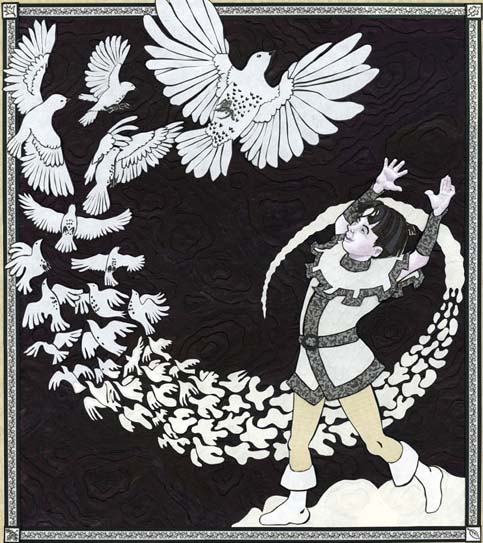
7. 7-Imp: Is there something you wish interviewers would ask you — but never do? Feel free to ask and respond here.
Jim: Q: If you could have three wishes, what would they be?
A: A few years ago, the members of my critique group, the Revisionaries, wrote down our answer to just that question. At the time, I said something about wishing I could sing and had a killer six-pack of abs and, finally, “for my art to outlive me.” Now, you would think a children’s book writer and avid reader of fairy tales would realize just how dangerous stating a wish that way is. All it would take for it to come true is for me to drop dead just before my first book goes out of print. Indeed, I was half expecting a heart attack before it was even published. So I hereby amend and clarify this wish to read as follows: “I would like my art to continue to bring joy to children (and wise adults) far beyond the end of my very long, exceedingly healthy, and happily productive and alert life.” Does that cover it? I think so. I’ve been ruminating about it for a while.
Okay, a few more questions before I Pivot you.
8. 7-Imp: What was it like the first time to see Tricia Tusa’s beautiful art work for In a Blue Room?
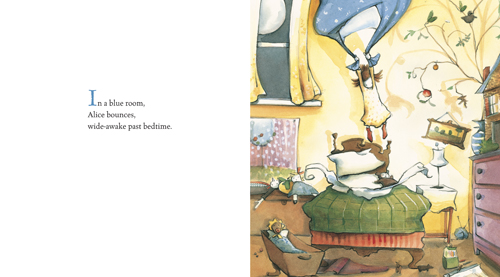
Jim: Betsy Bird, Fuse #8 over at School Library Journal, and a few others have called for Tricia to get something shiny from the Caldecott committee. I couldn’t agree more. The first time I saw the black and white sketches for the book I got goosebumps. Every writer hopes that the illustrator will bring more to the story than just a literal illustration of the text. Tricia’s work is a perfect example of this. My original vision of the book was of a blue room that gets more and more colorful as more items are added, then returns magically to blue at the end. But Tricia extended that ending, zooming out to show the figurative “blue room” is the planet earth. What a brilliant way to bring the story from a personal level to a (literally) universal one.
And a great ending should make you re-evaluate everything you’ve read in the story up to that point. Again, Tricia is a master. She sets up a sort of ironic tension between the text (which repeats that Alice is “in a blue room”) and the pictures (her walls are yellow) that drives the story forward. It’s like a little mystery to see how this room is going to end up blue. Then there is the one-two punch at the end, where the magic of the moon turns the room blue and then we zoom out and see that, even with yellow walls, Alice was, indeed, always in the “blue room” of planet Earth. Pretty cool, Tricia!

9. 7-Imp: How long did it take to write that book?
Jim: I’ve convinced my partner, who currently pays the bills, that when I am sitting around daydreaming, gazing off into the distance, swimming, or what appears to be “playing,” I am actually writing. And really I am. The brain is putting together ideas and finding little snippets of language, testing meter and rhythms, and so forth. That time is hard to quantify.
Once I sat down to record all that brain-writing, I think it took a few hours to write the first draft, then four years to revise it. Writing, as I am sure you know, is re-writing. The numerous drafts went from 270 words to 221 words. I think that means that, after hours of reflection, I’d change .03 words per day.
10. 7-Imp: Tell us about Little Spoon-Ears.
Jim: It’s the story of Vidalia Bounder, whose nickname is Little Spoon-Ears, because she is so small, but her ears are so big—like two giant serving spoons. She is more accustomed to listening than to speaking, and good thing too, as there is trouble brewing that only she can detect. The story is written in a sort of exaggerated Ohio Valley twang that my grandma used to use. It was fun to play with the language in that way.
It is the first story I sold (in 2002), but I have no idea when it will come out. The publisher has had it for quite some time. I hope because they are finding the perfect illustrator for it!
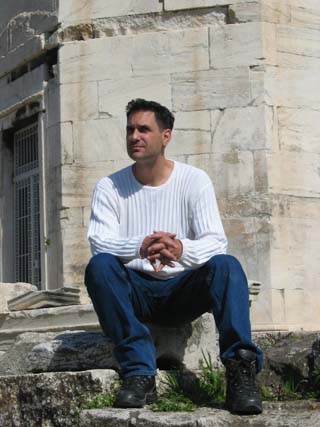 7-Imp: What is your favorite word?
7-Imp: What is your favorite word?
Jim (pictured again on a recent vacation to Greece): “Curmudgeon.” It just sounds so much like what it is. And, even though I am probably officially a bit young to be one, I am certainly headed in that direction.
7-Imp: What is your least favorite word?
Jim: “Nostril.” Besides bringing to mind a snotty mucous-covered hole, it is such a prissy little word. You almost have to purse your lips to say it.
7-Imp: What turns you on creatively, spiritually or emotionally?
Jim: A great narrative thread, and beautiful use of language, whether in Shakespeare or Buffy the Vampire Slayer.
7-Imp: What turns you off?
Jim: Politics. Not the Washington kind, which I find occasionally intriguing, but group politics. I always regret when I get caught up in them.
7-Imp: What is your favorite curse word? (optional)
Jim: I can’t really say, because my favorite curse word is the mother of all curse words here in America. You know the one I mean: that word that is so full of wonderful, guttural, Anglo-Saxony goodness. The one that I am going on record here saying that none of my readers should ever, EVER say. The one that, said after you hit your thumb with the hammer, always makes you feel better. The one that does everything a curse word should. The one that, even though we all hear it a thousand times a week (more if we watch HBO), never fails to shock. The one that describes something that can be rather fun. Really it is a little word that does a lot of work. Maybe that is why so many lazy writers over-use it.
7-Imp: What sound or noise do you love?
Jim: I grew up in Cincinnati. My house was just over the hill from the Ohio River valley. There were train tracks that ran along the river and, almost every night as I lay in bed, I could hear the distant sound of the wheels on the track and then the train whistle, with its eerie Doppler-induced pitch change. Even thinking about that sound makes my heart compress. I wish I could write a picture book just about that sound.
7-Imp: What sound or noise do you hate?
Jim: Liars. Especially if they hold high (or even the highest) office in the land.
7-Imp: What profession other than your own would you like to attempt?
Jim: I’d love to fly a fighter jet. I don’t want to fire any of the weapons, but I just love the idea of being far above the earth, experiencing all that speed. Instead, I’ll settle for driving too fast on the Pacific Coast Highway.
7-Imp: What profession would you not like to do?
Jim: Doctor. Too many sick people hanging around all the time.
7-Imp: If Heaven exists, what would you like to hear God say when you arrive at the Pearly Gates?
Jim: “Right this way, sir, your table is waiting.”

WOW. I’ve been a member of SCBWI — in both Sonoma Co. and the East Bay groups, and I ***NEVER*** associated our able leader (at the time) with someone who… I don’t know, had a life of his own. I just never even thought of it (of course, though, sometimes you don’t, because your head is stuck in the sand of your own writing efforts). THANKS for doing this — SCBWI is such a cool and helpful supportive group for so many, and I’m so glad this guy is finally getting his props after organizing and supporting and helping so many others. And yes — you’ve talked up the book so much and his illustrations on his own are AMAZING. I can’t wait ’til he gets his own Caldecott-worthy stuff out. Yay, Jim!
I’m kind of in love with the story ideas written on paper cups in a Japanese bath house. Also the photos in Greece. Nice interview, Jules. And very nice to meet you, Jim.
Jim is so funny. I love his story of his three wishes. Great interview!
What a terrific interview! Jim’s wide-ranging life sounds like a blast.
And I love TadMack’s comment. When I taught 8th-graders, they were astounded to run into me at the grocery store. Ms. S…you grocery shop?
Many more glasses of champagne to you, Jim, and thank you for sharing your illustration process!
Thanks, all. I’d LOVE to also line up the fab Ms. Tricia Tusa for an interview. Tina Nichols Coury did a short one, which I linked to above. Maybe she can set me up!
Jim’s the second person to list silence as his favorite sound (Liz also did). I love that. With two wee children, I have an all-new appreciation for silence.
Great Q&A, you all… and the elementary kids! I’m going to see if the library carries IN A BLUE ROOM now.
…It does, so I requested it that night, and read it today. Lovely!
[…] Jim Averbeck (interviewed May 7) on first seeing Tricia Tusa’s illustrations from In a Blue Room: “The first time I saw […]
[…] your own writing deadlines and a whole host of other stuff to do, yet you see a picture book like Jim Averbeck’s Except If, released by Atheneum in January of this year, and you really super bad want to feature […]
You can definitely see your skills in the work you write. The world hopes for even more passionate writers like you who arent afraid to say how they believe. Always go after your heart.
[…] True Desire and four problems.” Since last week over at Kirkus, I chatted with Jim Averbeck and Yasmeen Ismail about One Word from Sophia, coming to shelves in mid-June from Atheneum Books […]